Of course, you can go to the hardware store, buy some wood, and make an arbor for your garden. Or you can buy some premade shape to put over a path to create a sense of enclosure that breaks up space. But what if you don’t want to spend the money? What if you want to grow your own or create something that is a bit more of the land and the place? Perhaps something with a touch of the genius loci? Here are some ideas for getting a garden’s great benefits arbour – but naturally.
What is an Arbour?
An arbor is a garden structure that often serves as an inviting focal point in outdoor spaces. Typically made of wood or metal, it’s often a freestanding or attached framework that’s designed to support climbing plants and vines. With its arching or flat-topped design, an arbor creates a beautiful, shaded passageway or sitting area.
The word “arbor” (or “arbour” in British English) originates from the Latin word “arbor,” which means “tree” and over time, it came to refer to a structure made of latticework or framework, often covered with climbing plants or vines, resembling a leafy or shady bower under the branches of trees. The use of “arbor” in this context first appeared in Middle English in the 14th century, evolving to describe the garden structures we are familiar with today. This origin reflects the arbor’s purpose of providing a shaded, tree-like retreat in gardens and outdoor spaces.
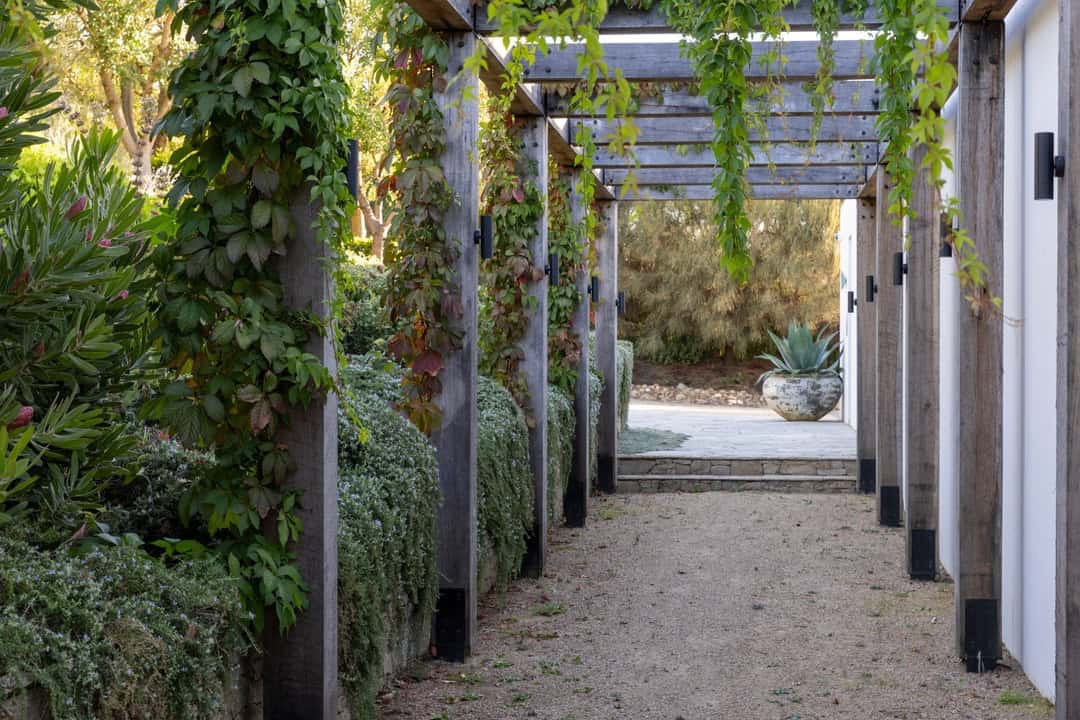
The Appeal of the Natural Arbor – Garden Arbour Ideas with Less Construction Cost
You cannot buy a natural arbor. It will only become part of your garden as it grows in place, naturally emerges, or evolves in situ to become a feature. In this way, a natural arbor will give your place more personality, a sense of time and maturity, and the satisfaction that can only come with the patience to work with nature and natural materials to create something beautiful.
1) Large trees and shrubs growing together to create a canopy.
For the fastest results, choose small trees or large shrubs and plant them off the side of a path. Don’t be tempted to plant them too close to the edges of your path, though… you don’t want them to grow too much together – just enough so their canopies mingle.
So long as they get sufficiently tall (at least ten or more feet), they can eventually come together overhead to create a natural arbor. Vase-shaped shrubs can be a little easier to use since they have a natural shape and longer arching branches that will help to create an overhead mass that finishes the tunnel. Plan to prune selectively to ensure your trees and shrubs develop as you need.
The white flowering viburnum enhances privacy at the entrance to this home. It provides a screening element that acts as a natural screen, providing privacy from neighbors. The Viburnum creates a secluded nook and a more intimate space. The seating area feels more comfortable and is available for quiet contemplation with the arbour. Imagine if the trees and the overhead protection were not there—would you be drawn to this corner?
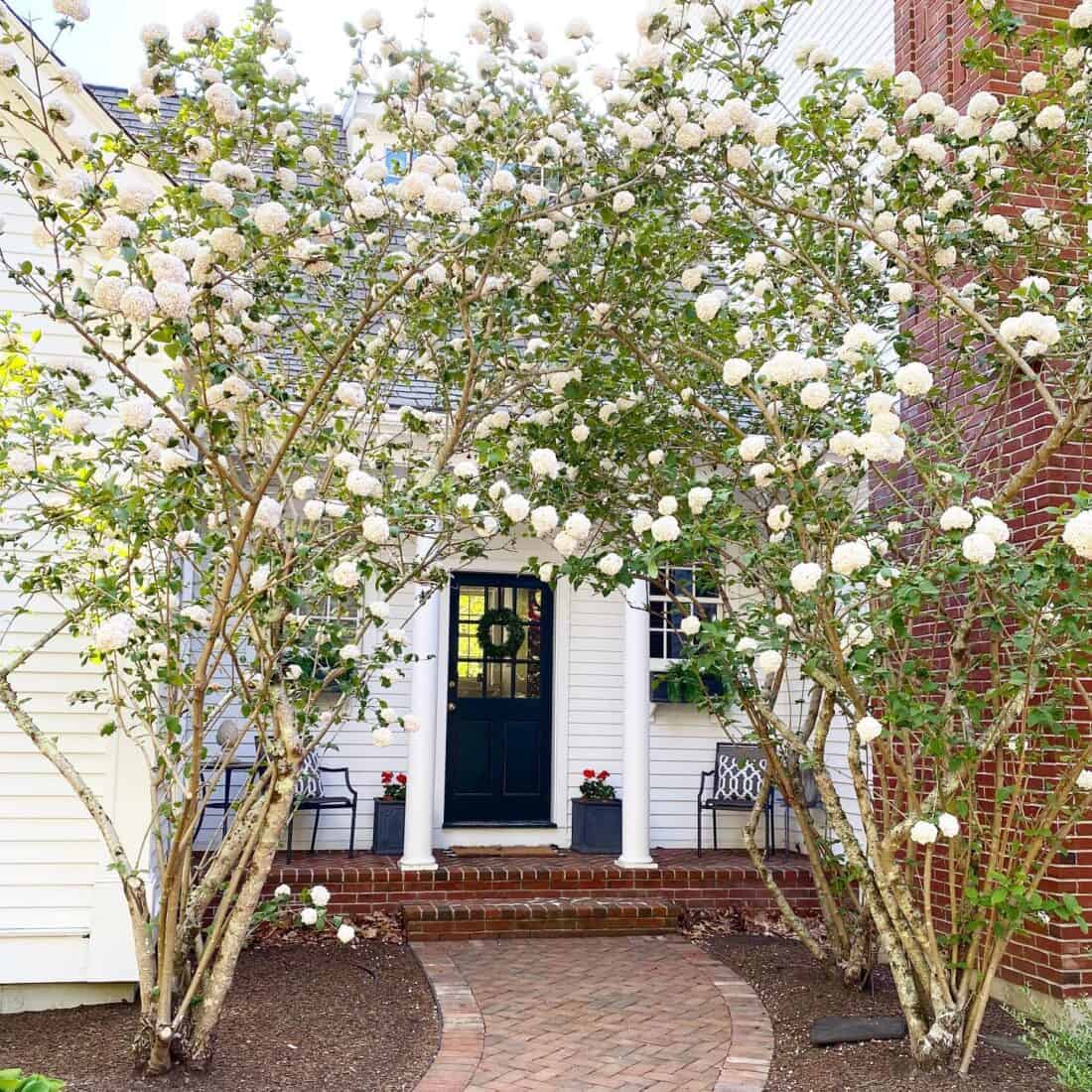
2) Use Rustic, Locally Sourced, or Onsite Materials to make a Traditional Structure.
Though a little harder to work with – logs, branches, and raw, unmilled lumber create a garden arbor that usually feels more timeless and appropriate. Don’t import rustic logs from some far-off place – this is an opportunity to source materials locally and get creative with the design.
An arbor can complement the architectural style of a house or other building and reinforce the overall design theme of a property. They don’t all have to match but consider repeating colors, details, or materials.
They provide a structure for seasonal decorations or lighting, enhancing the garden’s ambiance during special occasions.
Garden Accessibility
Arbors can highlight and enhance the experience of walking along garden paths, making the journey through the space more engaging. They can also improve garden accessibility (provide structure for seasonal or year-round lighting that can improve ambiance and usability).
I like how the path and arbor below aren’t perfectly centered on each other. This wide arbor has space for a delightfully unexpected off-center path and lush planting to encroach from he side.

3) Natural Vine Arbors
Many woody vines and more delicate vines can be used to create natural arbours. All vines will require a structure (I tend to reccommend simple but sturdy and hefty metal structures that will eventually disappear visually as they are enveloped by the vining branches).
Woody vines like wisteria and roses can get very heavy over time and are known to collapse structures that can’t take the weight of the plant. Consider what you will grow over the structure and make sure that it is structurally sound enough.
The vining branches’ beauty – which are often twisted together as they grow- can take center stage as a garden feature (particularly in the winter).
If the vine is seasonal or does not have substantial branches (like clematis or some annual vines), you can also create a natural structure with woody branches from other plants through which the vine can grow. Remember – the structure doesn’t have to be living to look (and be) natural. You can use natural materials to cover your trellis or arbor structure.

4) Carving an Arbor out of Hedges
An arbor can act as a natural screen – and so can a hedge. So why not combine the two ideas and get the design benefits of an arbor by carving it out of a hedge?
Arbours can serve as striking focal points, drawing the eye and adding architectural interest to a garden. They provide a design anchor, especially in large open spaces, and provide a sense of structure and balance. You often don’t even need “walls” in a garden to separate a space – you can make an area feel like a new garden room by doing nothing more than providing a defined doorway to it. (ie. An arbor).
Defining Space in the Garden
Because our palette is the outdoors and walls and ceilings are not as structural or defined as they are in our interior spaces, you can employ some unique tricks to define space.
Arbors and entryways are a huge part of delineating outdoor space. An arbor creates a threshold and it funnels traffic over it. This one thing can – without even adding other objects that define and separate space – create the feeling of a room.
The transitional spaces – that is, the entryways and the exits from one area to the next (that are often marked by an arbour-like structure)– are vastly more important than you might expect.
For example – If the transitional space is long, you will feel like you have gone on a bit of a journey by the end. If the transition is tight, you will feel expansive then the room beyond opens up. If you can’t see what is on the other side of the threshold, you will create mystery, curiosity, and excitement for what is on the other side.
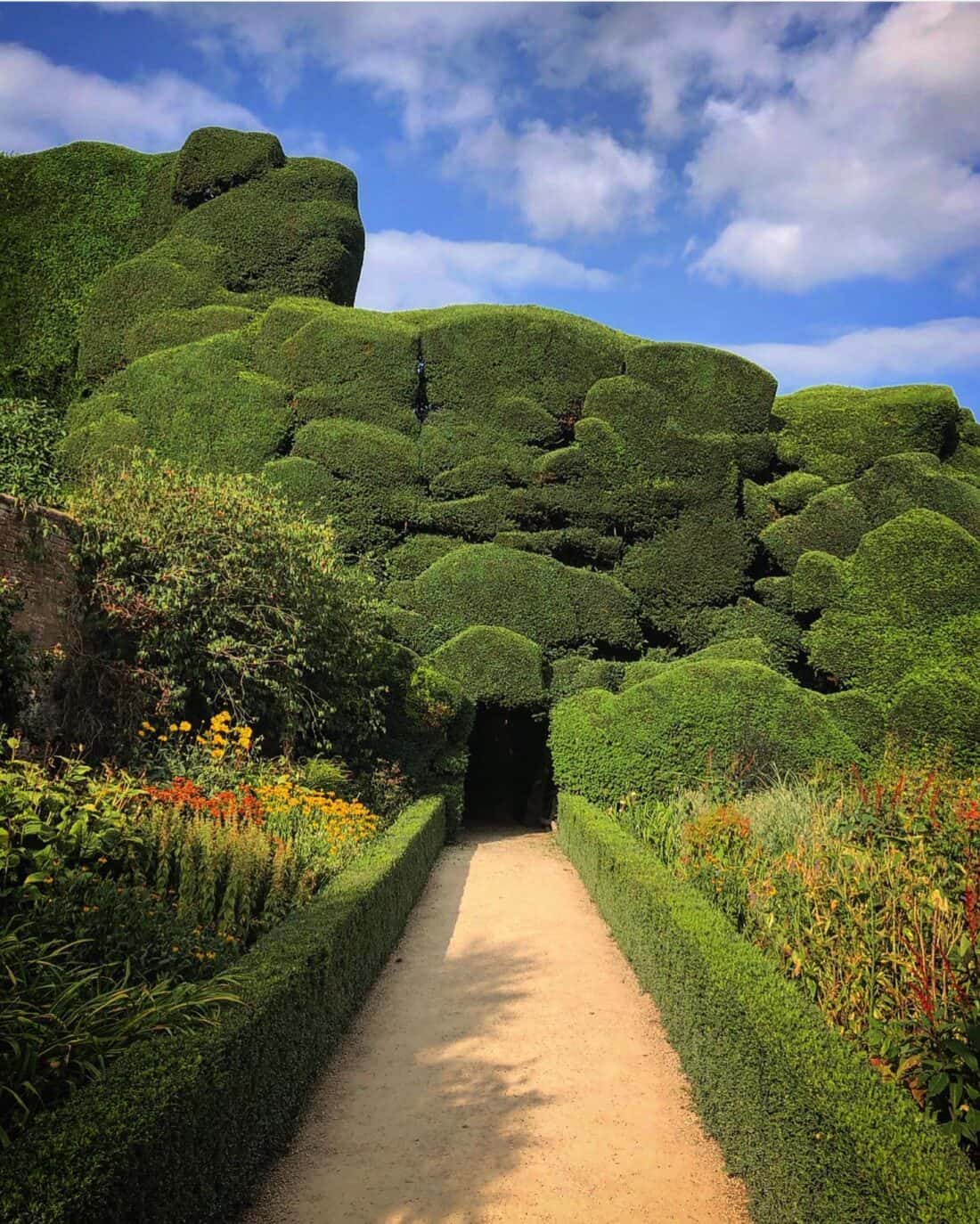
5) The Natural Sculptural Arbor
As I mentioned, countless types of garden-grown materials can be lashed together to create structures. If you have access to or a surplus of anything with textural interest, use it to create sculptures that can help break up space.
Mature mountain Laurel or Rhododendron have great woody branches. Curly willow or curly hazel have interesting shapes. Driftwood (like below), bamboo, and even some grasses have enough structure when consolidated to start to make arcs and designs.
Remember that an arbor has many uses (from defining space and creating focal points to supporting plants and offering shade, shelter, and privacy). It doesn’t even have to go overhead fully. As you can see below, even the suggestion that it could go overhead is enough for humans to fill in the blank and enjoy a sense of enclosure.
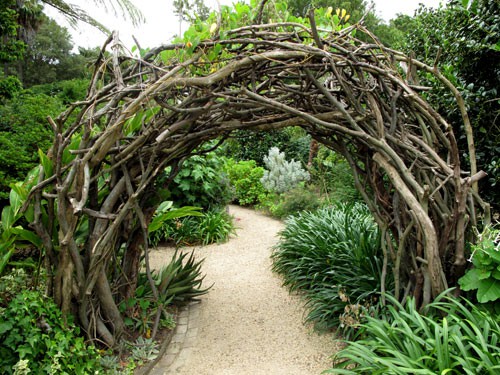
A Natural Twig Arbor
image from piajanebijkerk.com
Building and planting a DIY arbor is a rewarding project that can enhance the aesthetic appeal of your outdoor space. It can also help you start to carve rooms out of an otherwise empty or open landscape. Select a suitable location, gather materials such as wood and tools, and, depending on your design, construct and install the arbor. Once complete, consider adding climbing plants for added charm and to enhance the new space you have created.
Drift Wood Half Arbors
the beach arbor sculpture below by Pavel Perina
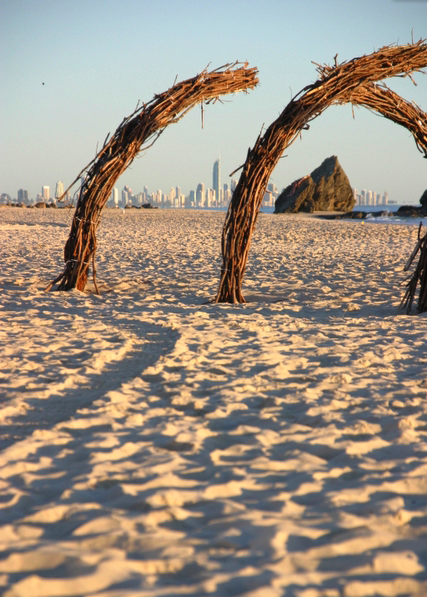
I think you could also recommend most varieties of clematis for this sort of application. They will grow on trellised structures and have a wonderful color and fragrance.
Recommending Wisteria may not be such a great idea. The vines will most certainly do this, but are VERY invasive unless you find the relatively rare American (rather than Chinese or Japanese) variety.